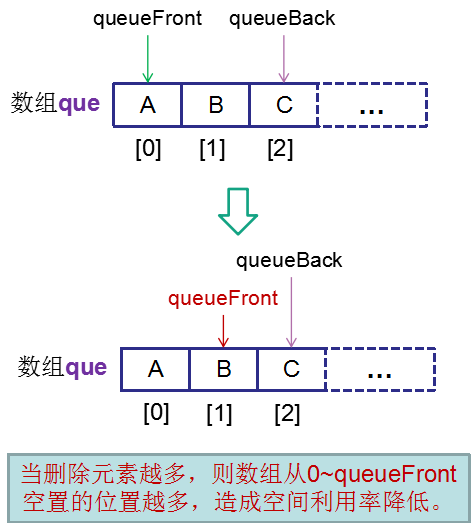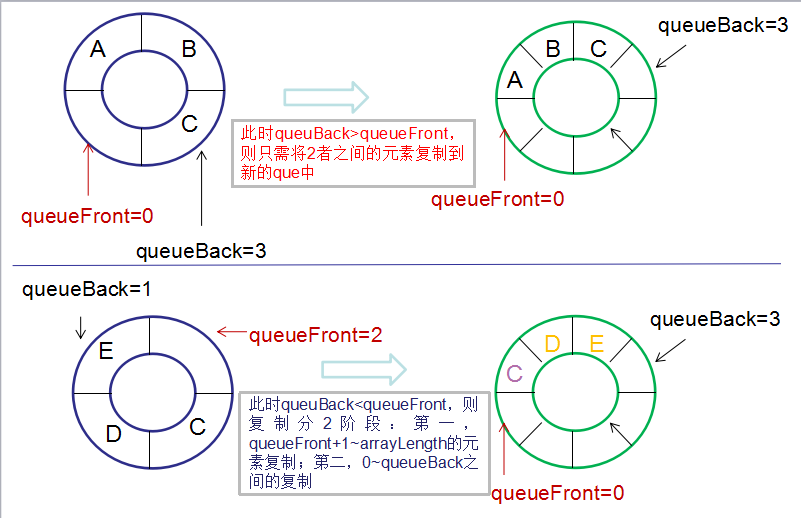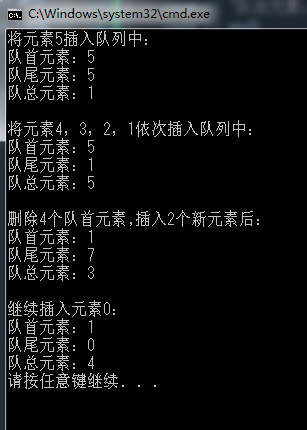筆記七:基於陣列的迴圈佇列的實現
阿新 • • 發佈:2018-12-25
定義:佇列也是一種線性表。其特點是佇列的插入與刪除在兩端進行,是一個先進先出(FIFO)的線性表。插入元素的一端叫隊尾,刪除元素的一端叫隊首。
三種表現形式:
1、
公式1: location(i)=i
——佇列第i個元素對映到陣列中,即為下標為i的元素,i>=0。
2、
公式2:location(i)=location(隊首元素)+i
——佇列第i個元素在陣列中的位置只與隊首元素有關,則刪除一個隊首元素時不需要吧元素左移,queueFront加1就好。因此可以解決1中的問題。
3、
公式3:location(i)=(location(隊首元素)+i)% arrayLength
——把陣列視為一個環,則2中出現的空間利用率不高的問題可以解決。
在1,2中queueFront=queueBack=-1,在3中對陣列下標求餘%,故初始狀態queueFront=queueBack=0,若對圖3中左上角陣列繼續插入一個元素D,假設可以插在下標為0處,則queueFront=queueBack,不能判斷此時佇列是空還是滿,因此應空餘一個空間給queueFront標識。即在初始化的空佇列中,插入的第一個元素位於佇列陣列下標為1的位置,而不是0。每次插入一個新元素,queueBack=(queueBack+1)% arrayLength,是考慮到迴圈插入陣列中。
程式碼:
#pragma warning(disable:4996)
#include<iostream>
using namespace std;
template<typename T>
class queue
{
public:
virtual ~queue() {};
virtual bool empty() const = 0;
virtual int size() const = 0;
virtual T& front() = 0; //返回頭元素的引用
virtual T& back() = 0; //返回尾元素的引用 執行:




